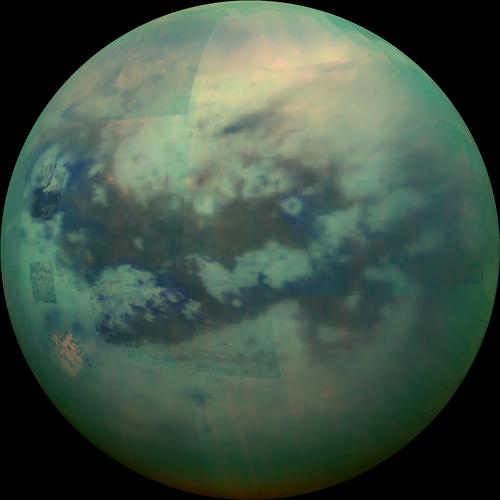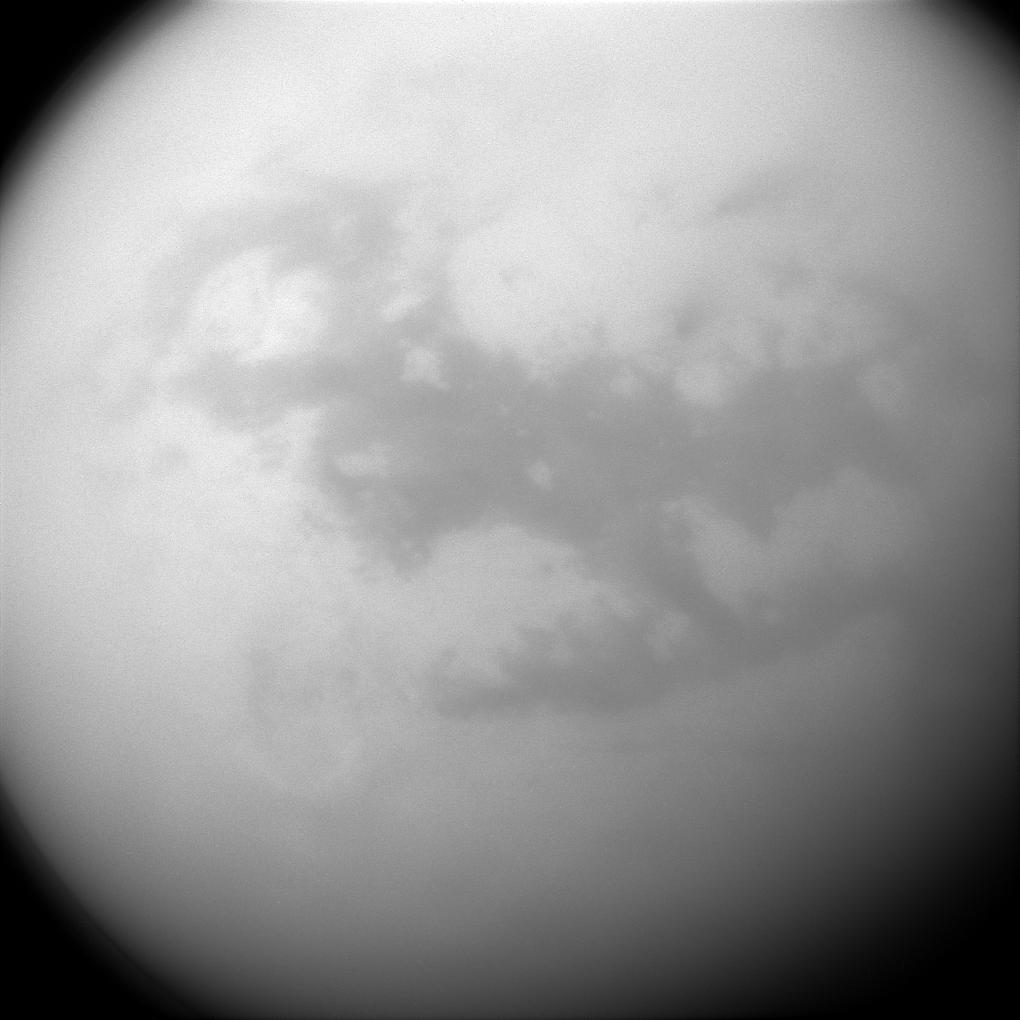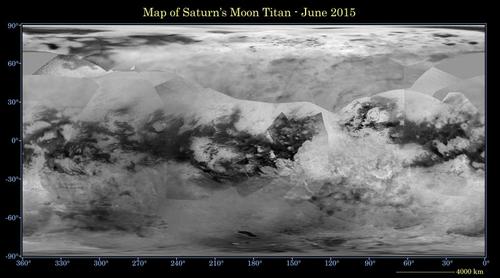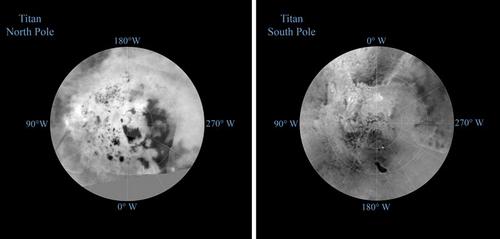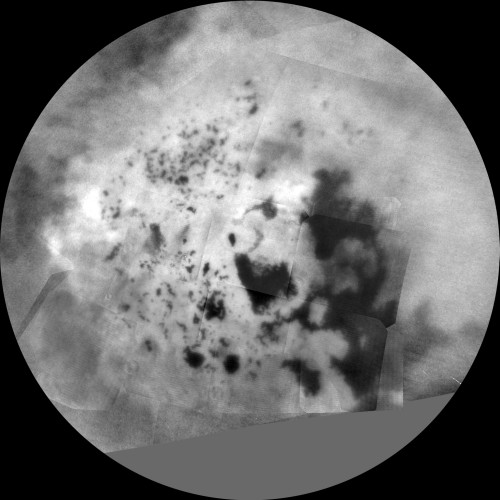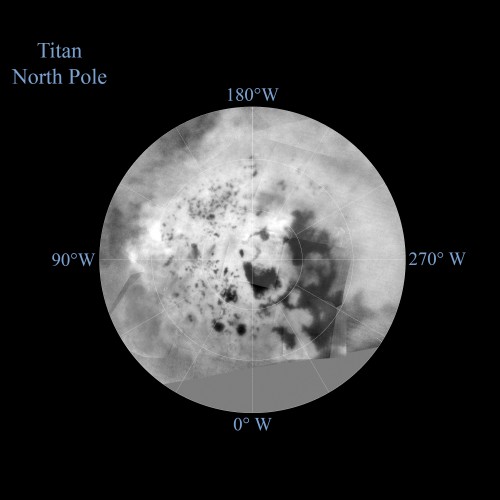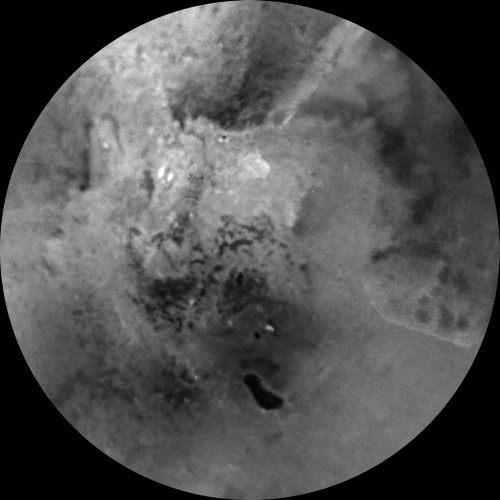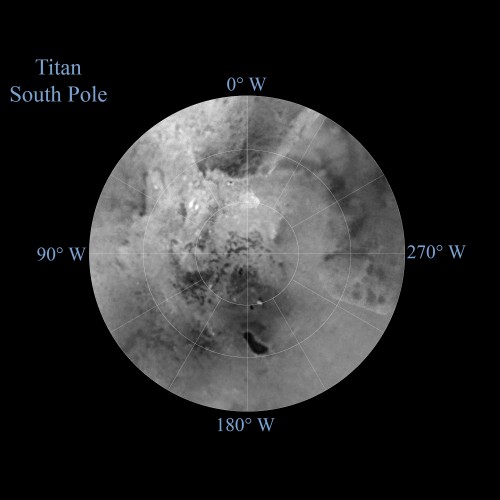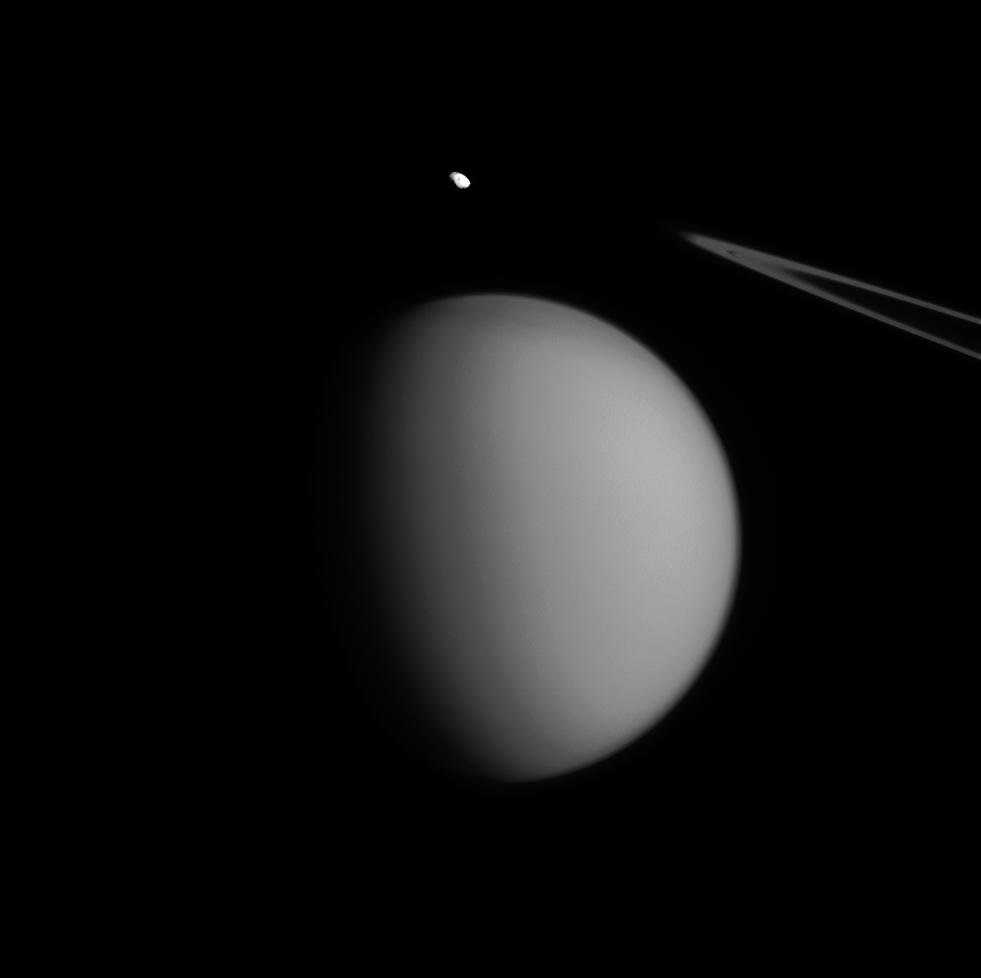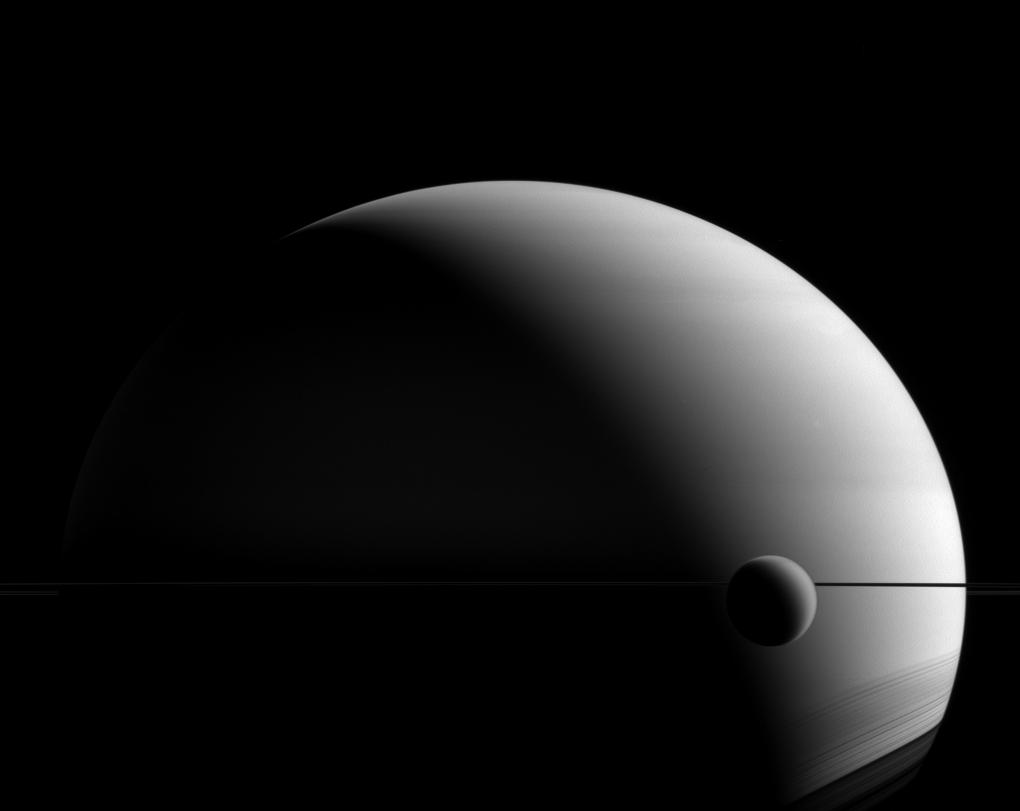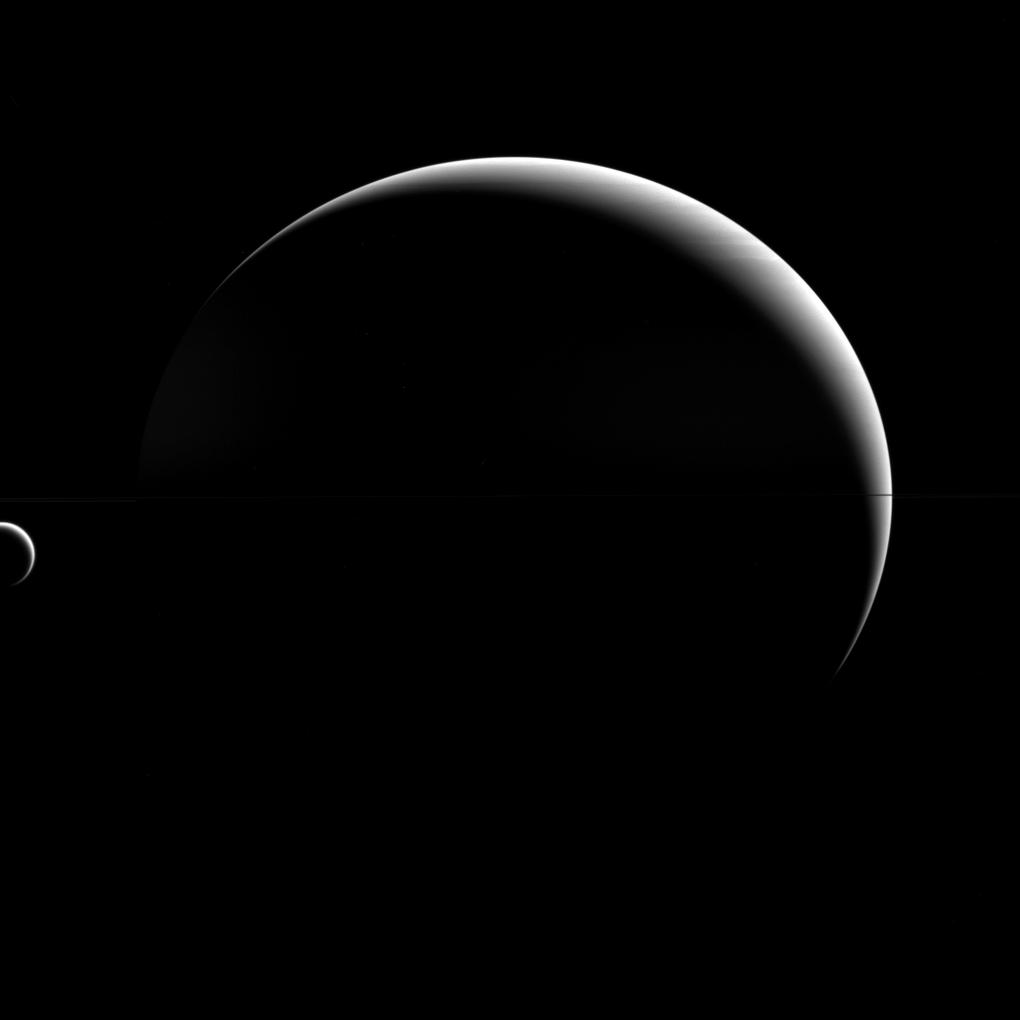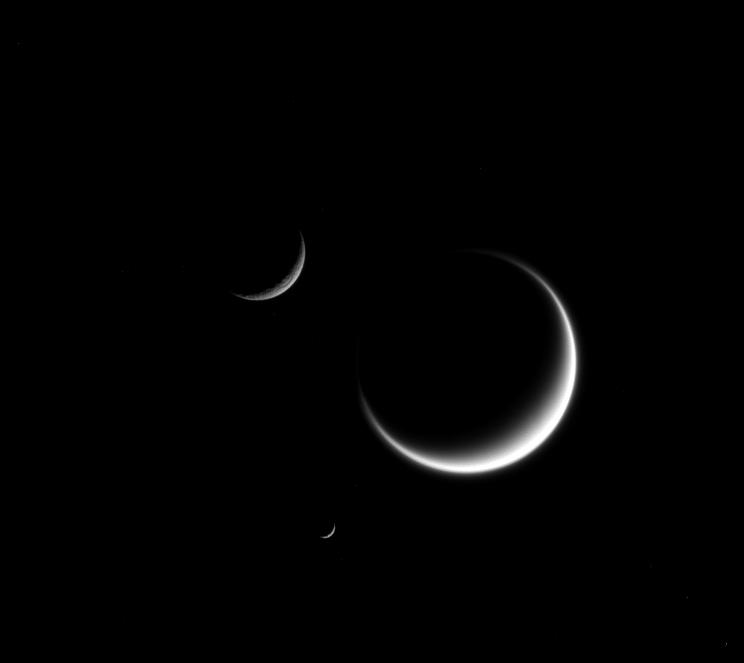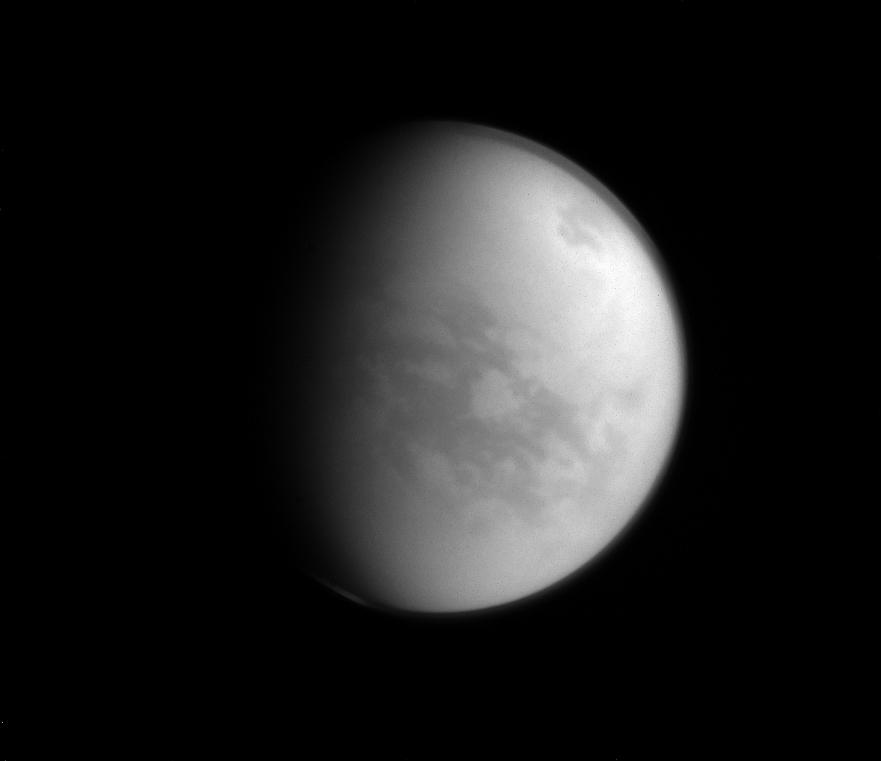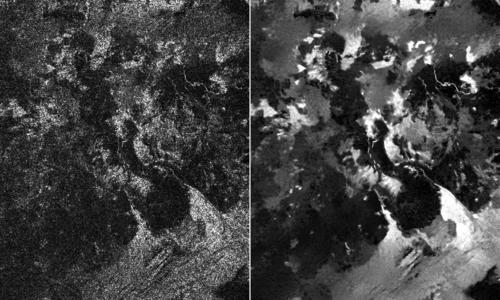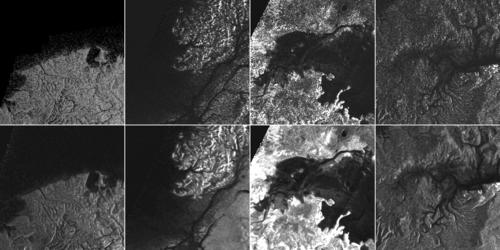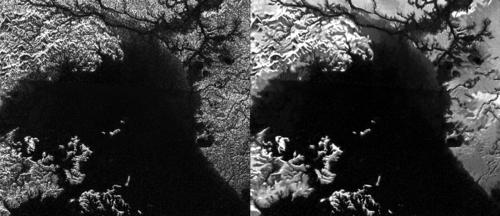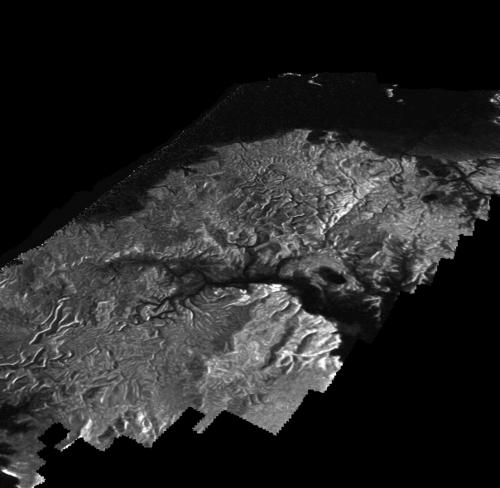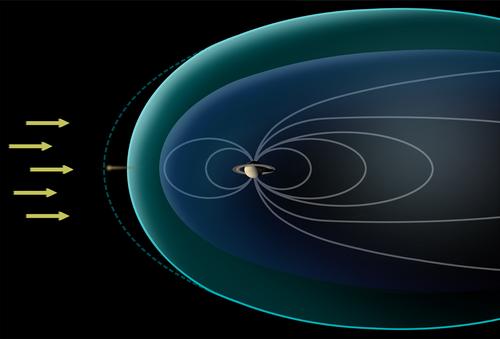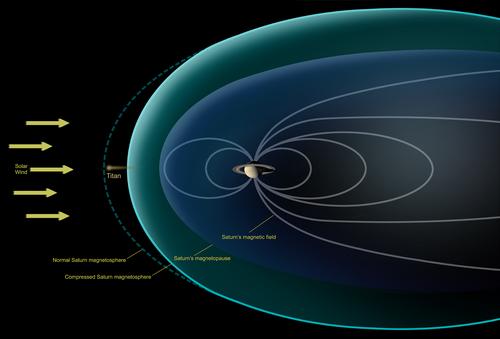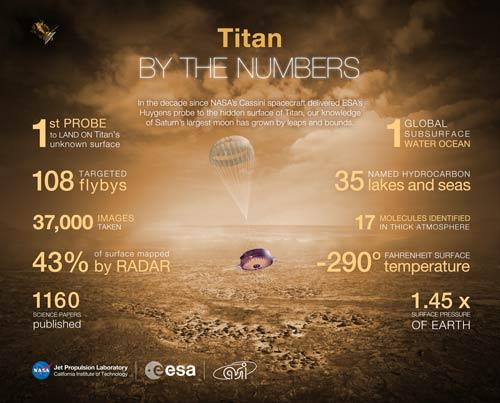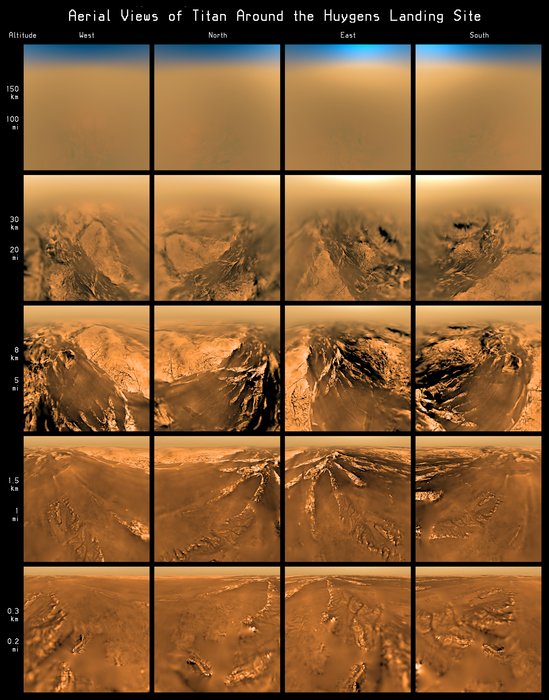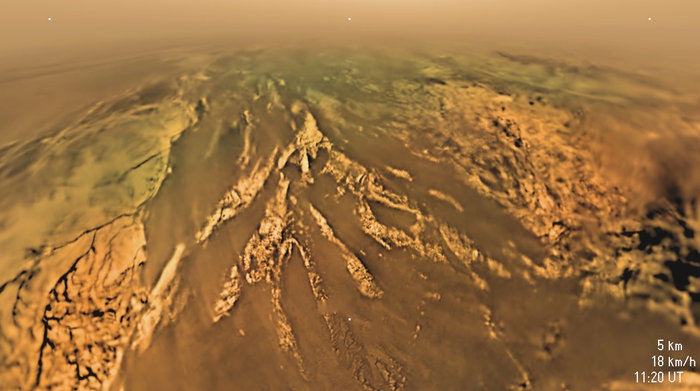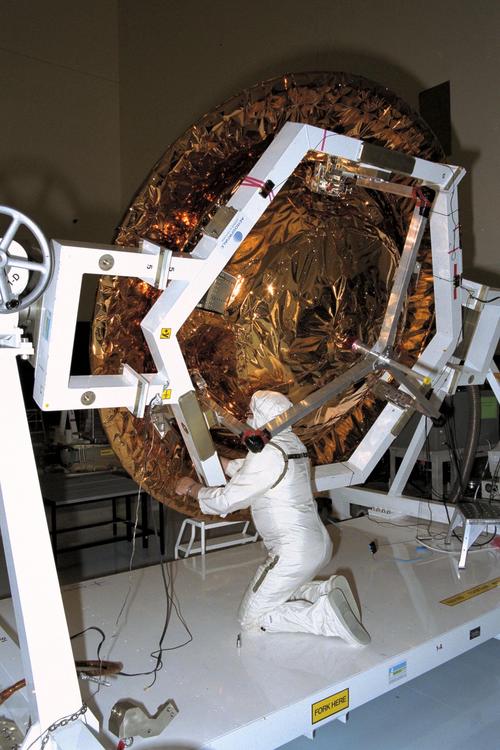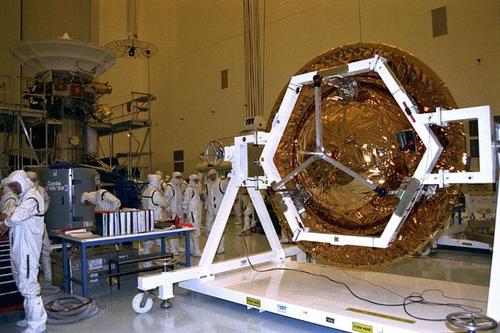| This global view of Saturn's largest moon Titan
corresponds to a composite image of the Opaque Moon obtained in the
infrared spectrum from the Visual and Infrared Mapping Spectrometer (VIMS)
of the Cassini probe on November 13, 2015 during the "T-114" flyby. In
this mosaic, blue corresponds to wavelengths centered at 1.3 microns,
green represents wavelengths centered at 2 microns and red corresponds to
wavelengths centered at 5 microns. Any image taken at visible wavelengths
centered around 0.5 microns would only reveal the hazy and opaque
atmosphere of the giant moon. The images acquired at near-infrared
wavelengths from the Cassini spacecraft allow us to see through the haze
or the atmosphere and to identify surface features. During the T-114 flyby, the closest-approach altitude reached by the Cassini probe was particularly high compared to typical flybys. The closest-approach altitude attained by the Cassini probe was in fact 6,200 miles or 10,000 kilometers, largely higher than typical flybys which oscillate around 750 miles or 1,200 kilometers. The remarkably high flyby allowed researchers to collect moderate-resolution images over wide regions. The VIMS instrument typically obtained moderate resolutions around a few kilometers per pixel. The regions observed in this disk are mostly found on the Saturn-facing hemisphere of the Orange Moon. One can see in particular the famous contrast between dark regions found at low latitudes and bright regions or regions with a relatively high albedo. One can notice the dark regions Fensal and Aztlan which are roughly parallel and which form a laid "H". Fensal is found to the north and Aztlan represents the segment to the south. Fensal and Aztlan are dominated by linear and parallel dunes extending over long distances. The dunes are reminiscent of the Seif Dunes found in the Namib Desert. Some areas or subframes in the mosaic are revealed at higher resolution than elsewhere because they were taken near closest approach. As a result, they show more detail. However, they cover smaller portions than areas acquired when the Cassini probe was farther away from the Opaque Moon. The best VIMS image obtained so far of Menrva is revealed here. Menrva appears to be the largest confirmed impact crater present on Titan. Menrva can be identified in the upper left part of the dark Fensal near the limb at left, above center. Menrva had been clearly revealed in radar data obtained from the Radar Mapper of the Cassini probe in 2005. One can also notice the bright basin Hotei Regio to the left of the dark Aztlan. Eastern Xanadu can be seen as well in subframes with a similar resolution. Due to seasonal changes, one can notice some changes in the appearance of the disk compared to VIMS data obtained during the T-9 flyby performed on December 26, 2005. Currently, the northern hemisphere is experiencing the late Spring season whereas the southern hemisphere is experiencing the late Autumn season. Therefore, since the VIMS observations of 2005, the Sun has migrated higher in the sky of Titan's northern hemisphere as Summer approaches and lower in the sky of Titan's southern hemisphere as Winter approaches. Changes in the illumination angle relative to the Titanian surface allow the northern latitudes to appear brighter and the high southern latitudes to appear darker. Image Credit: NASA/JPL/University of Arizona/University of Idaho. |
